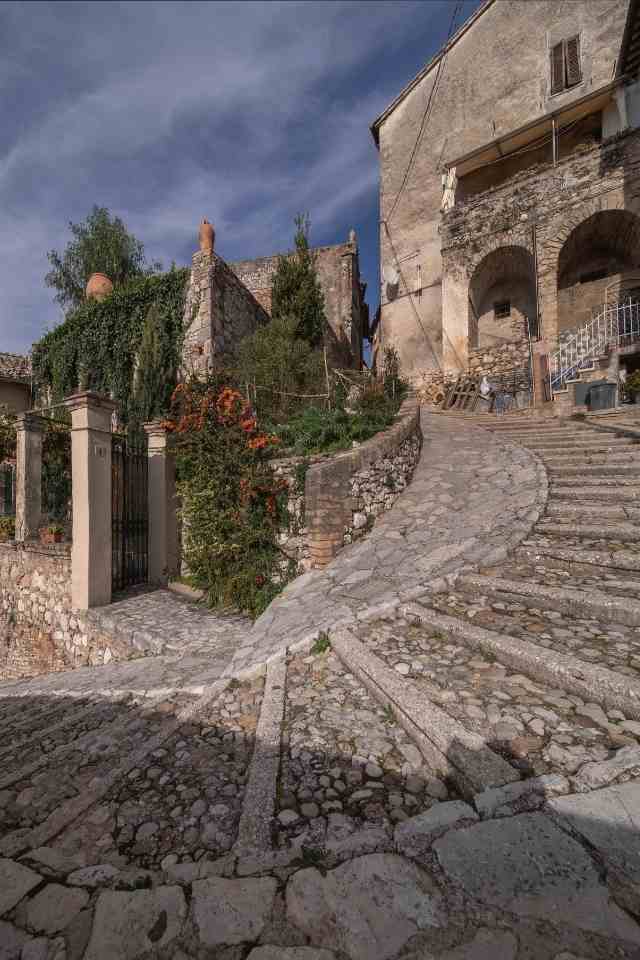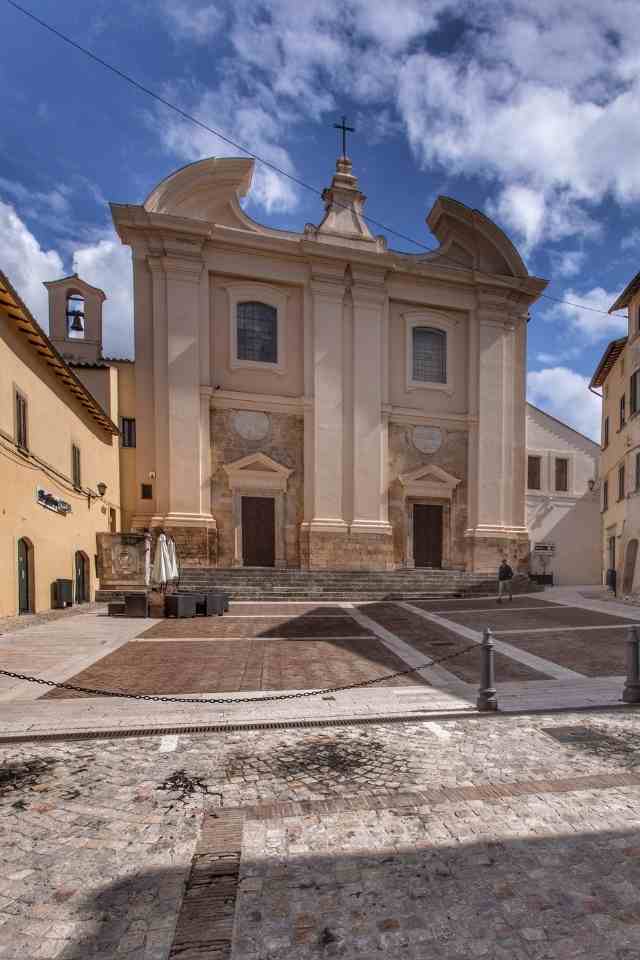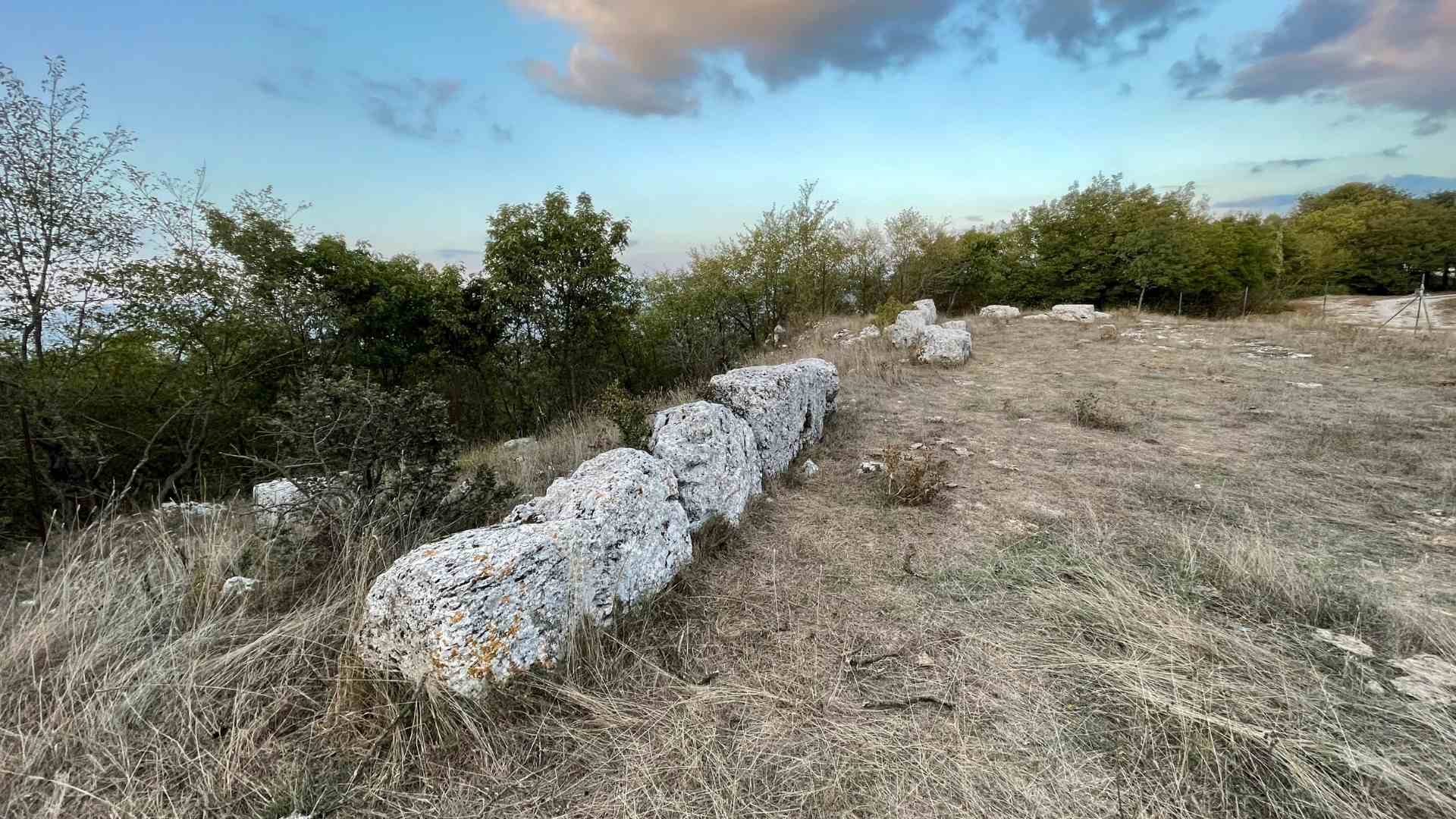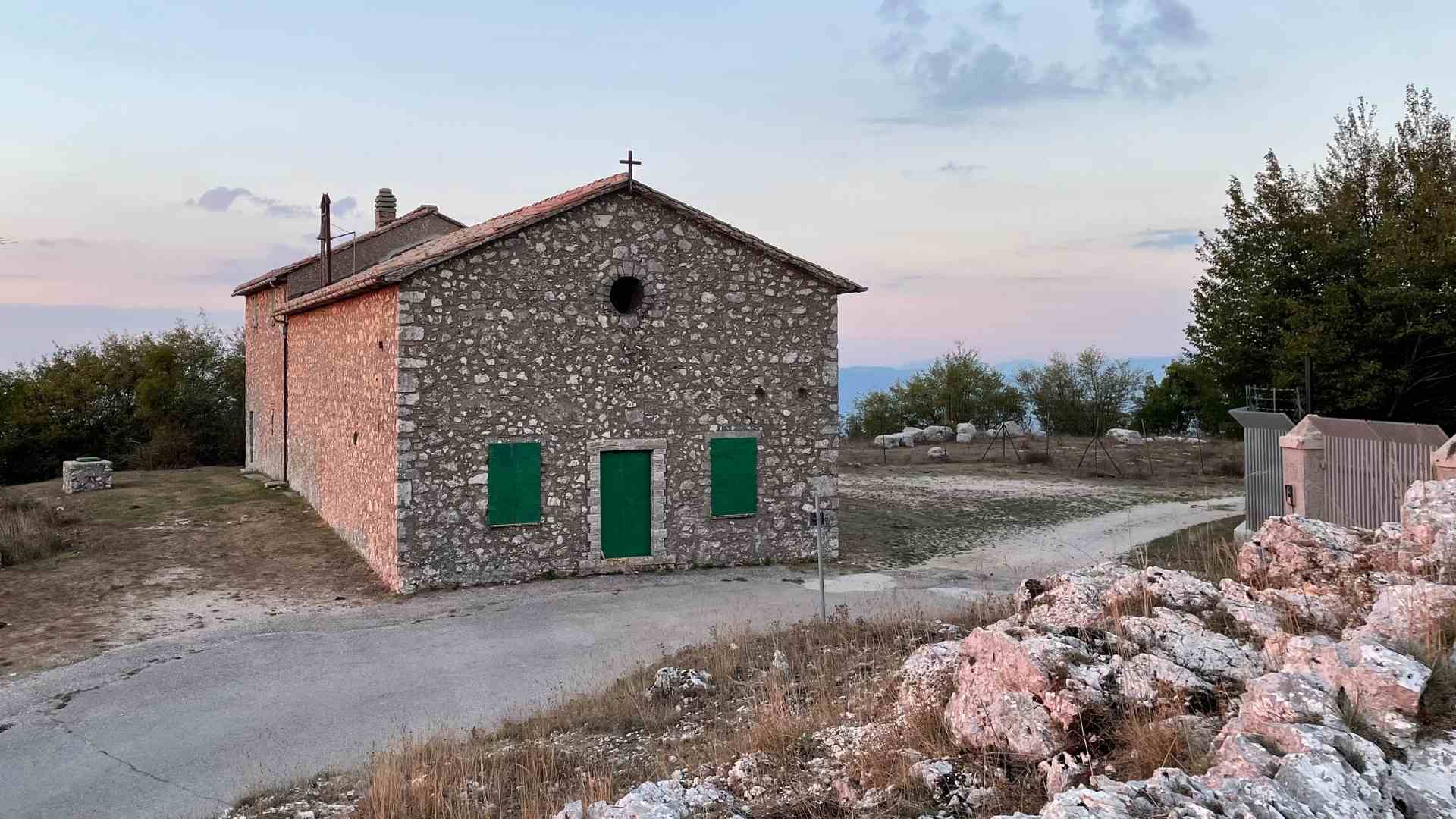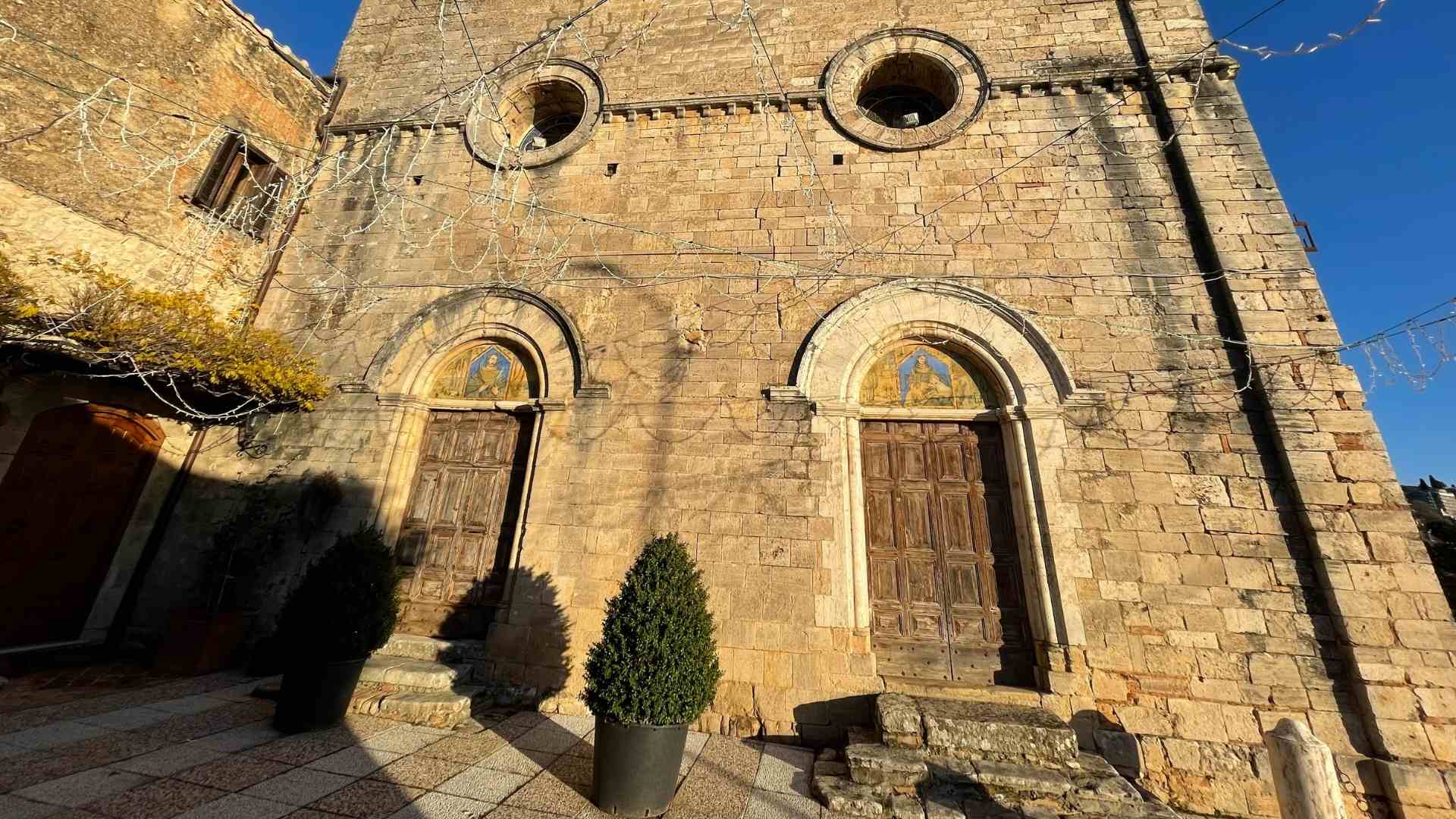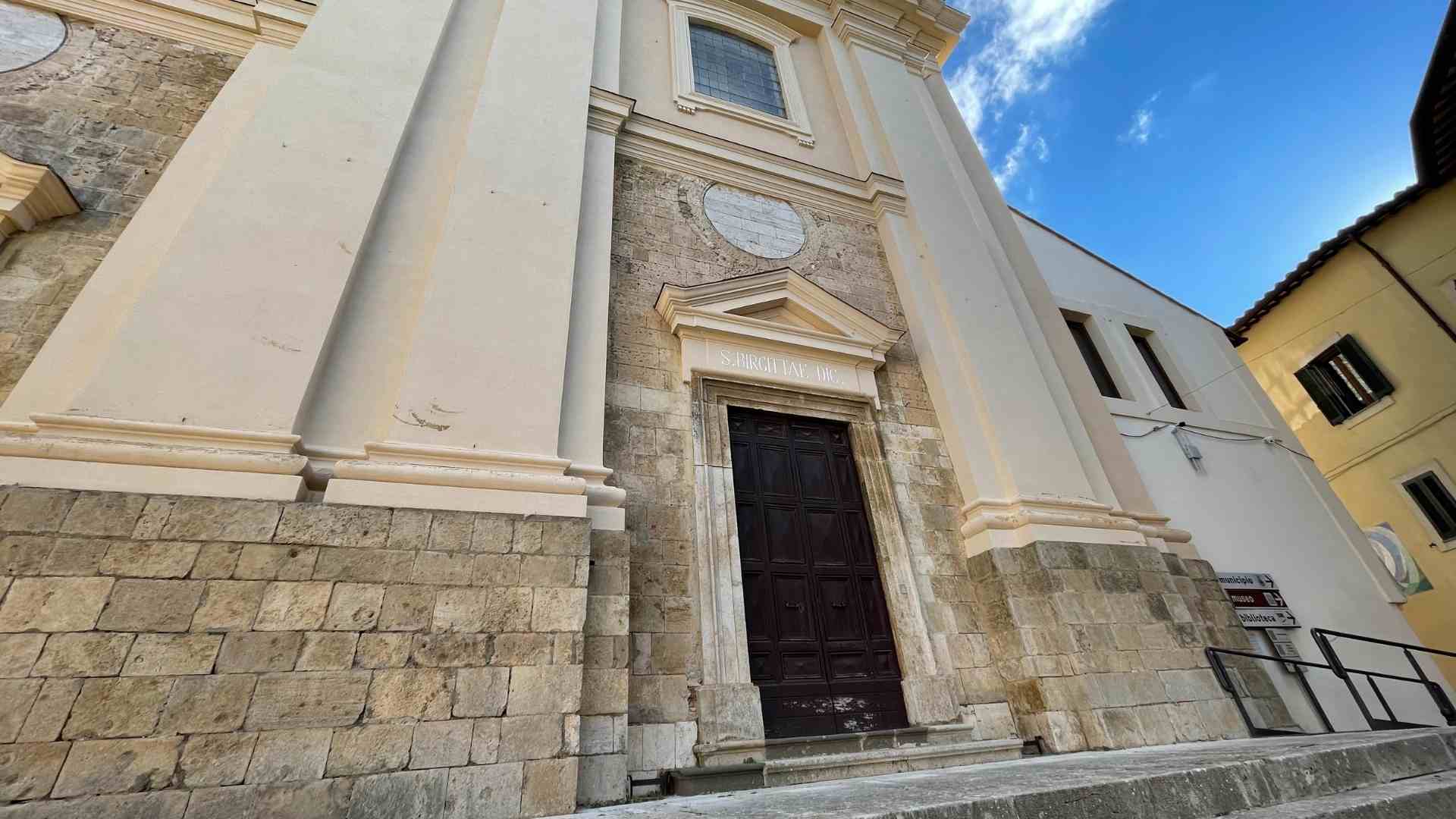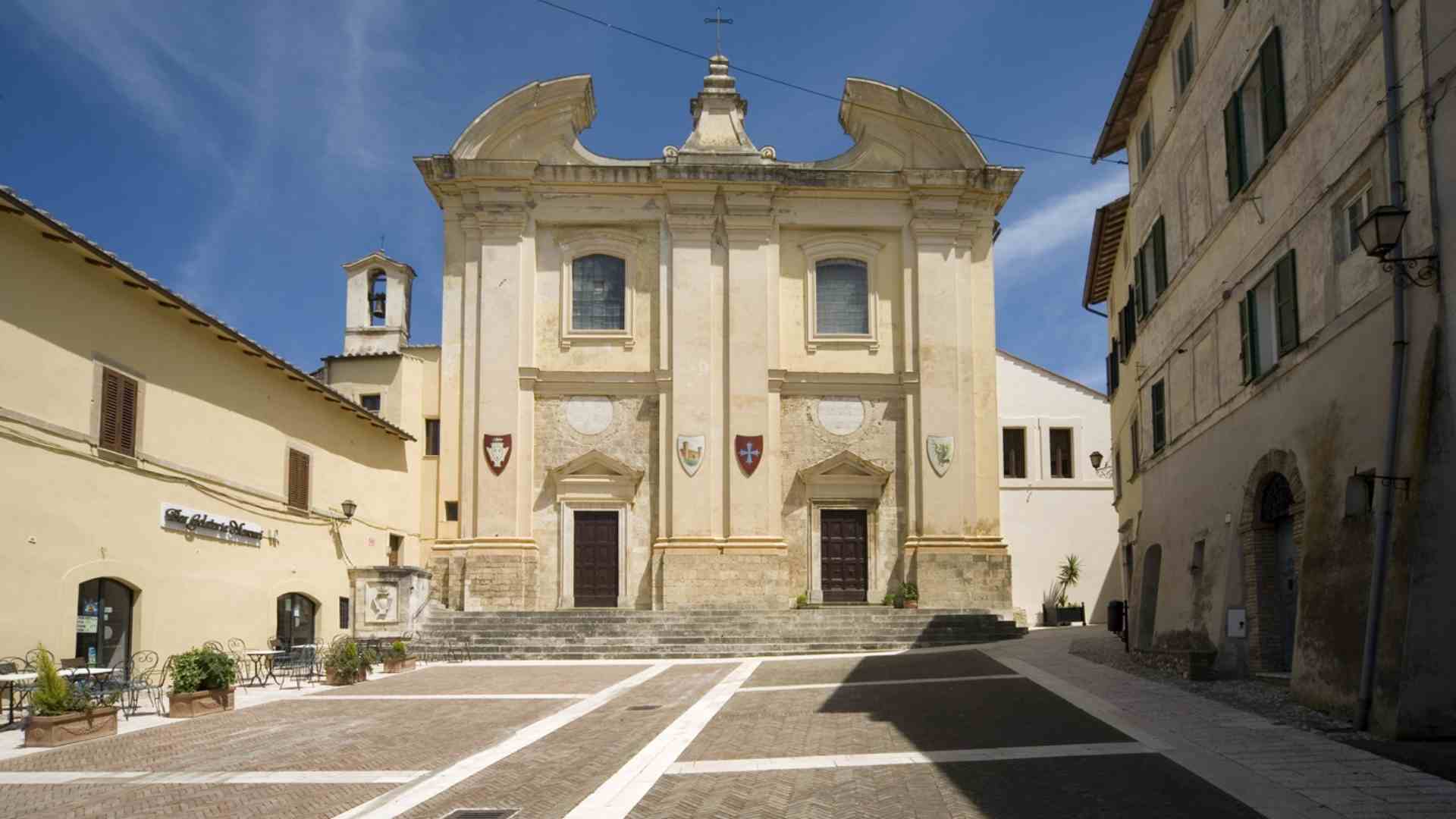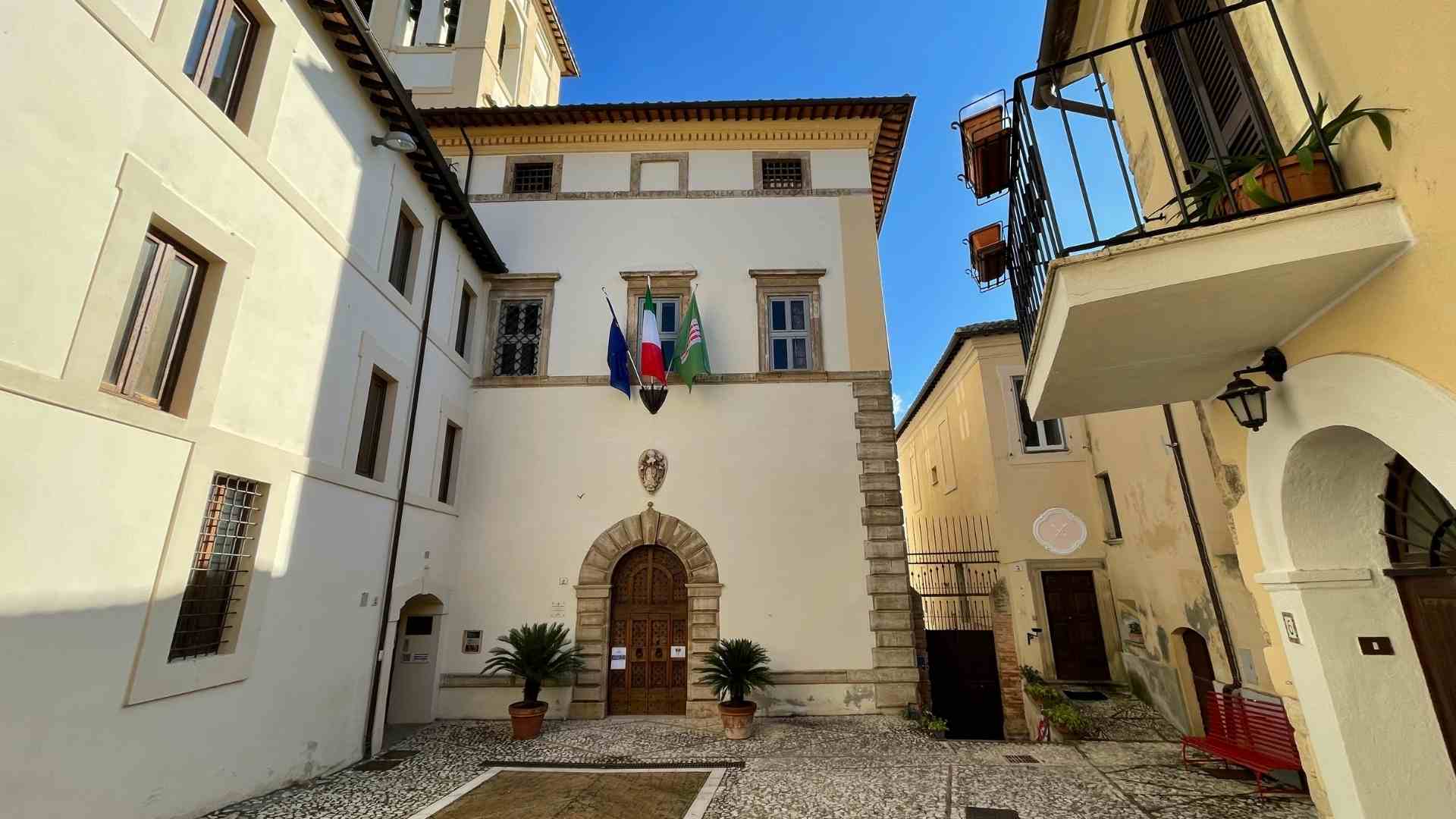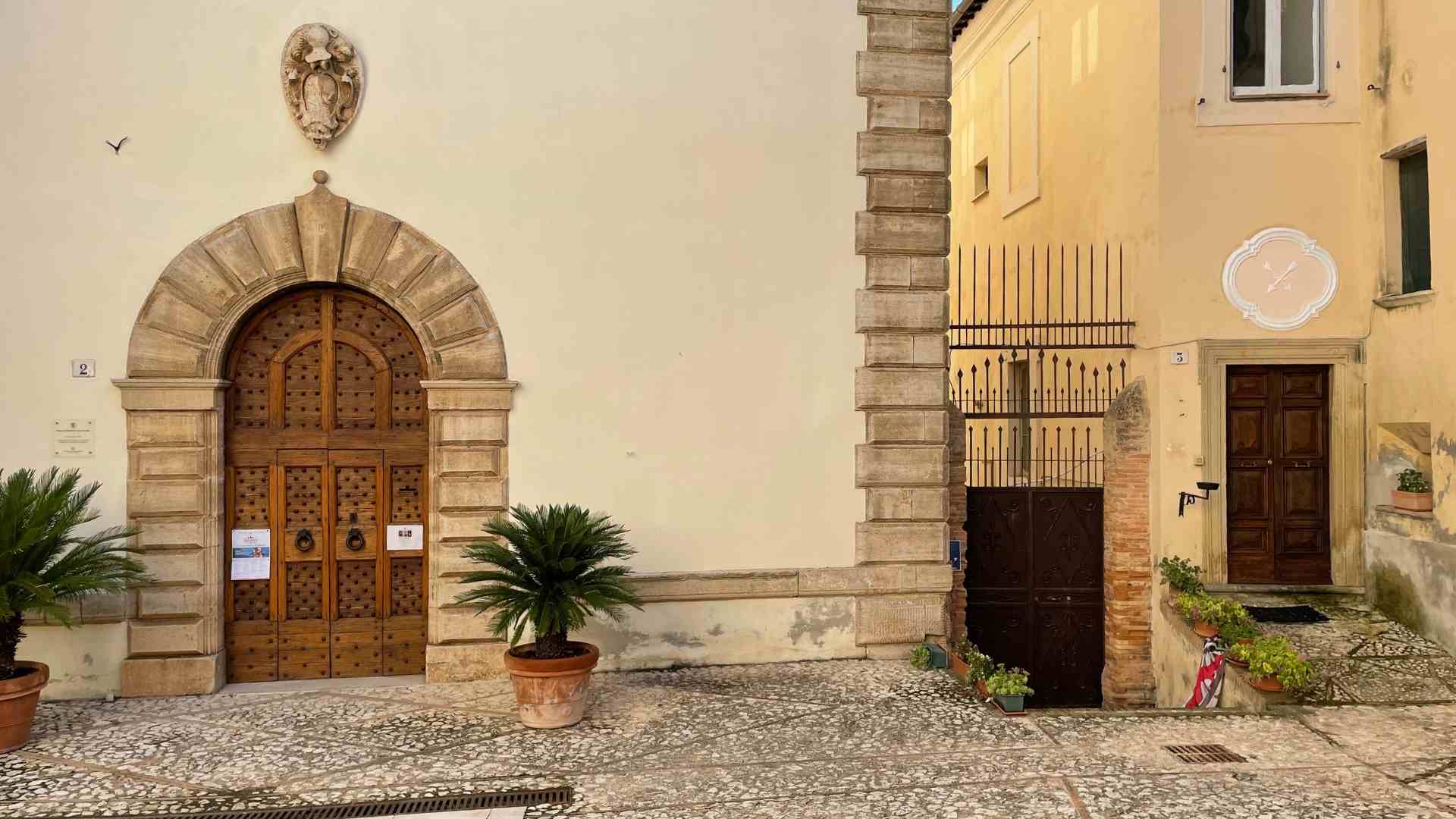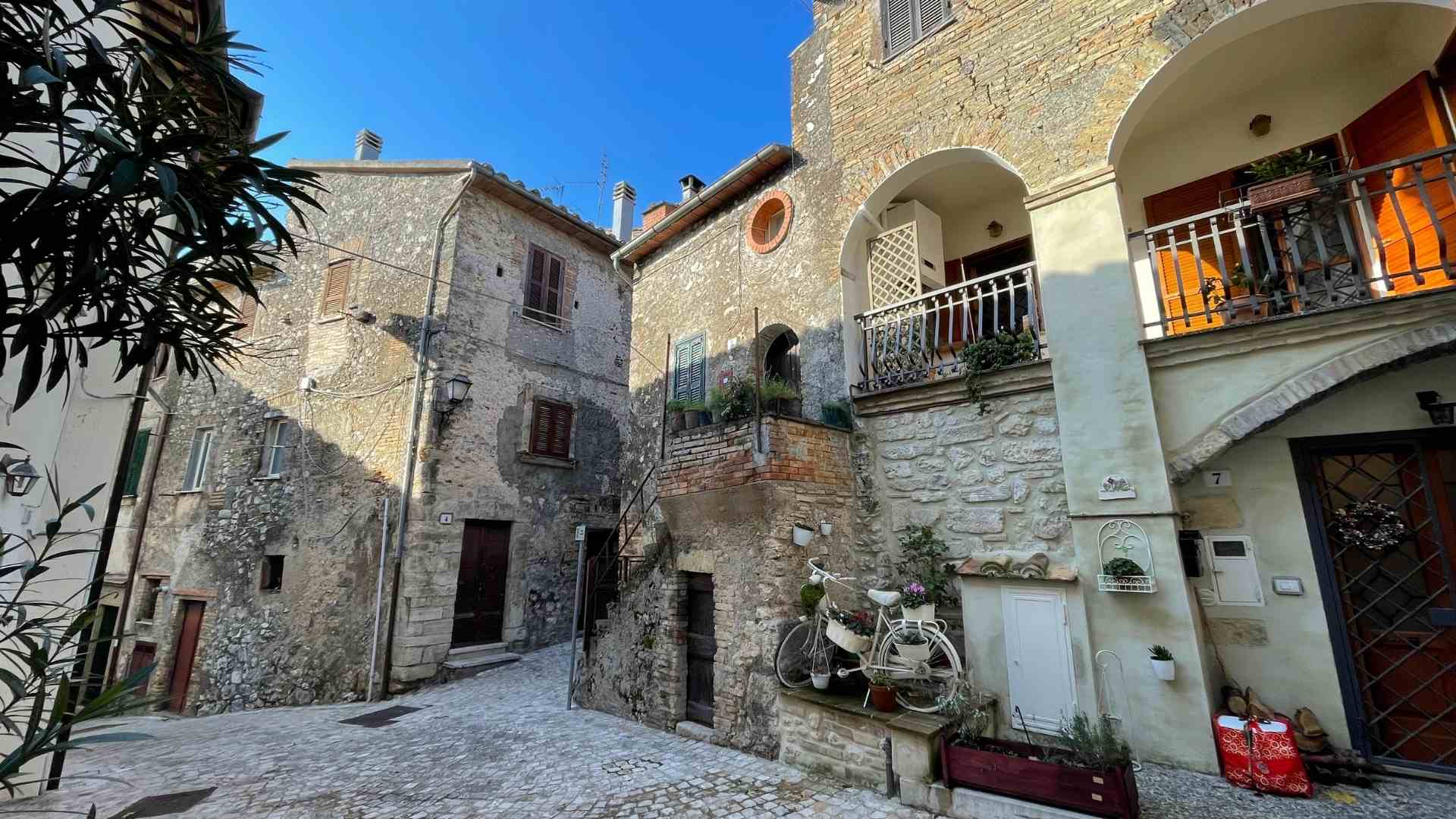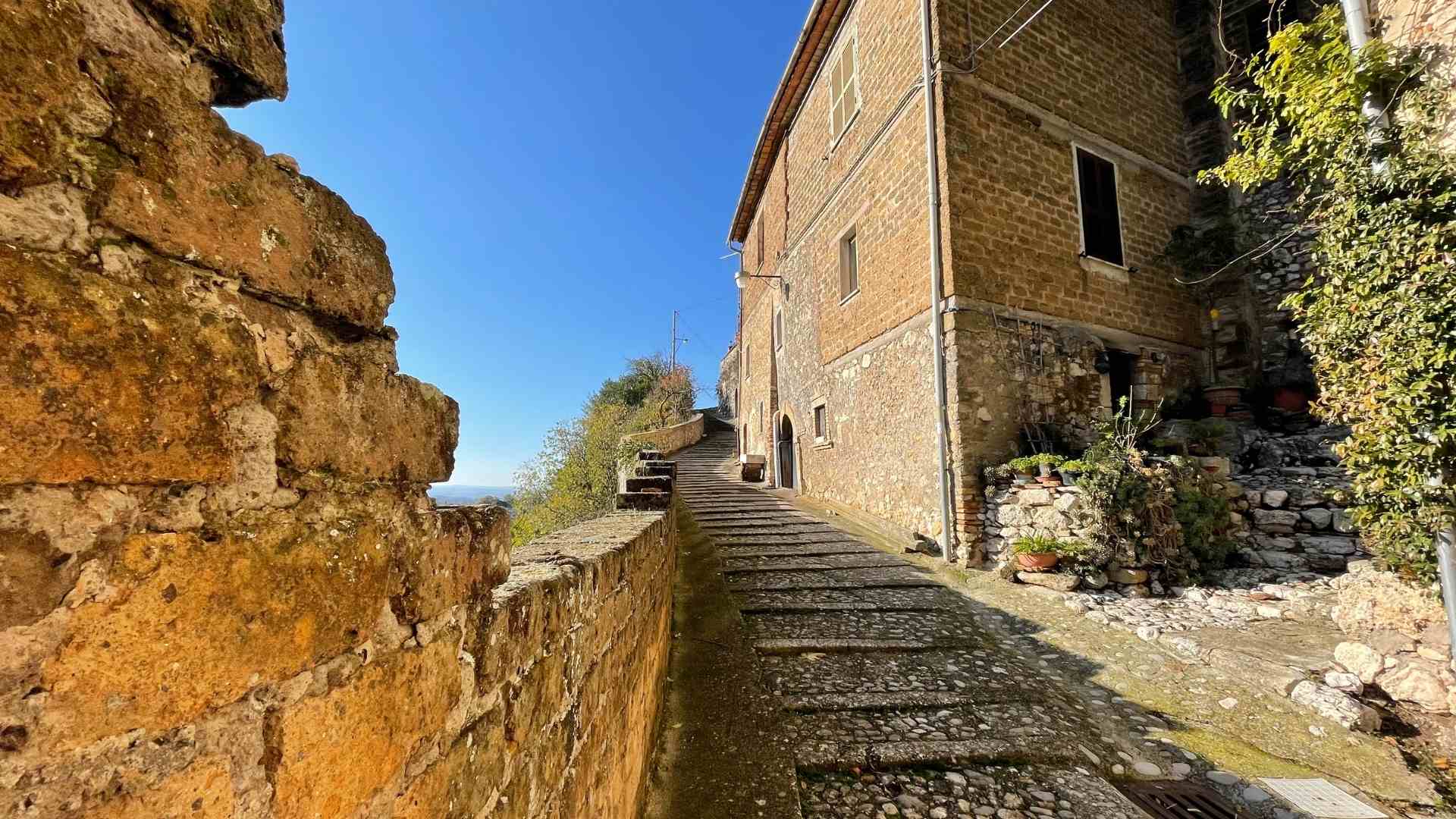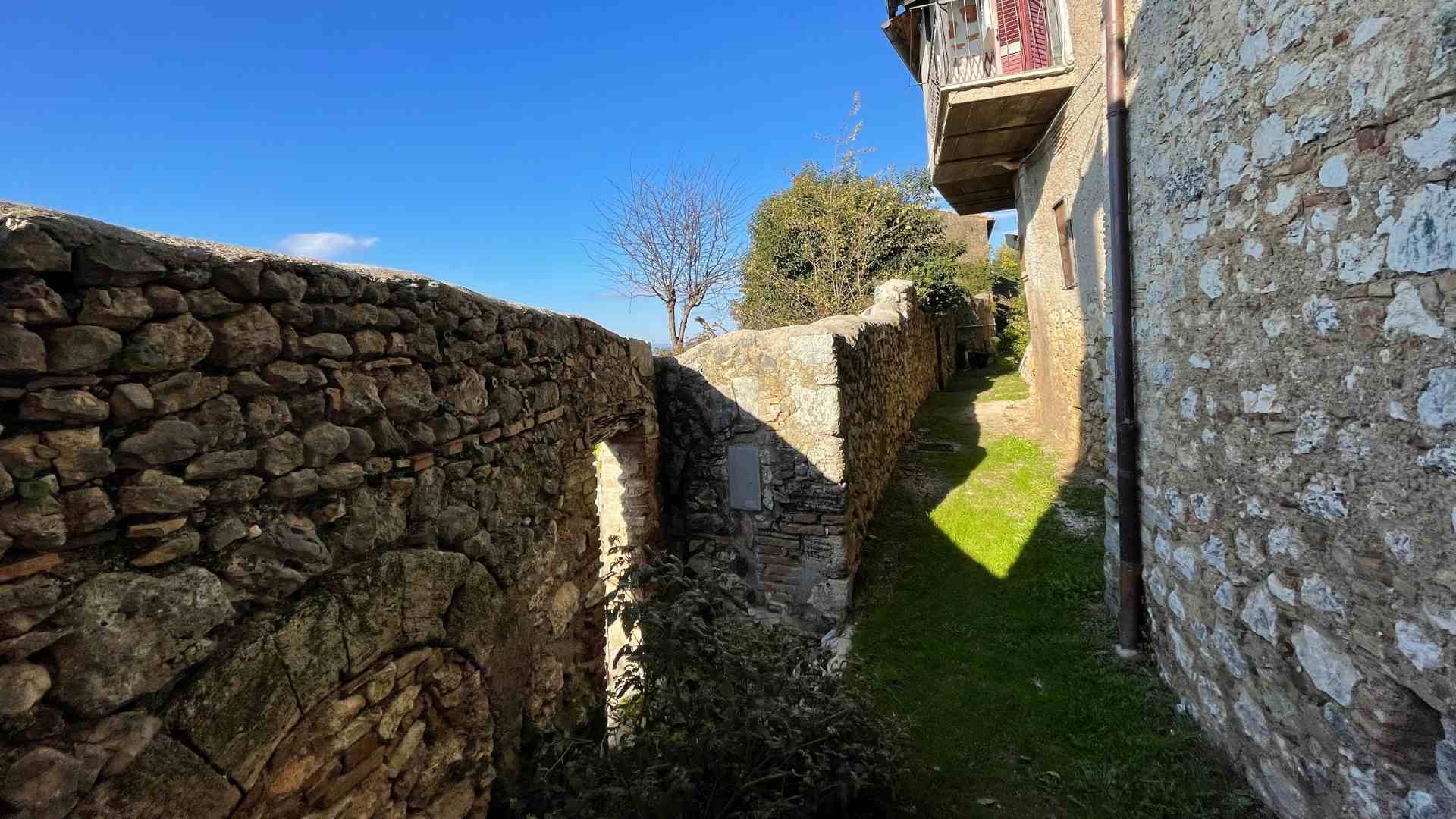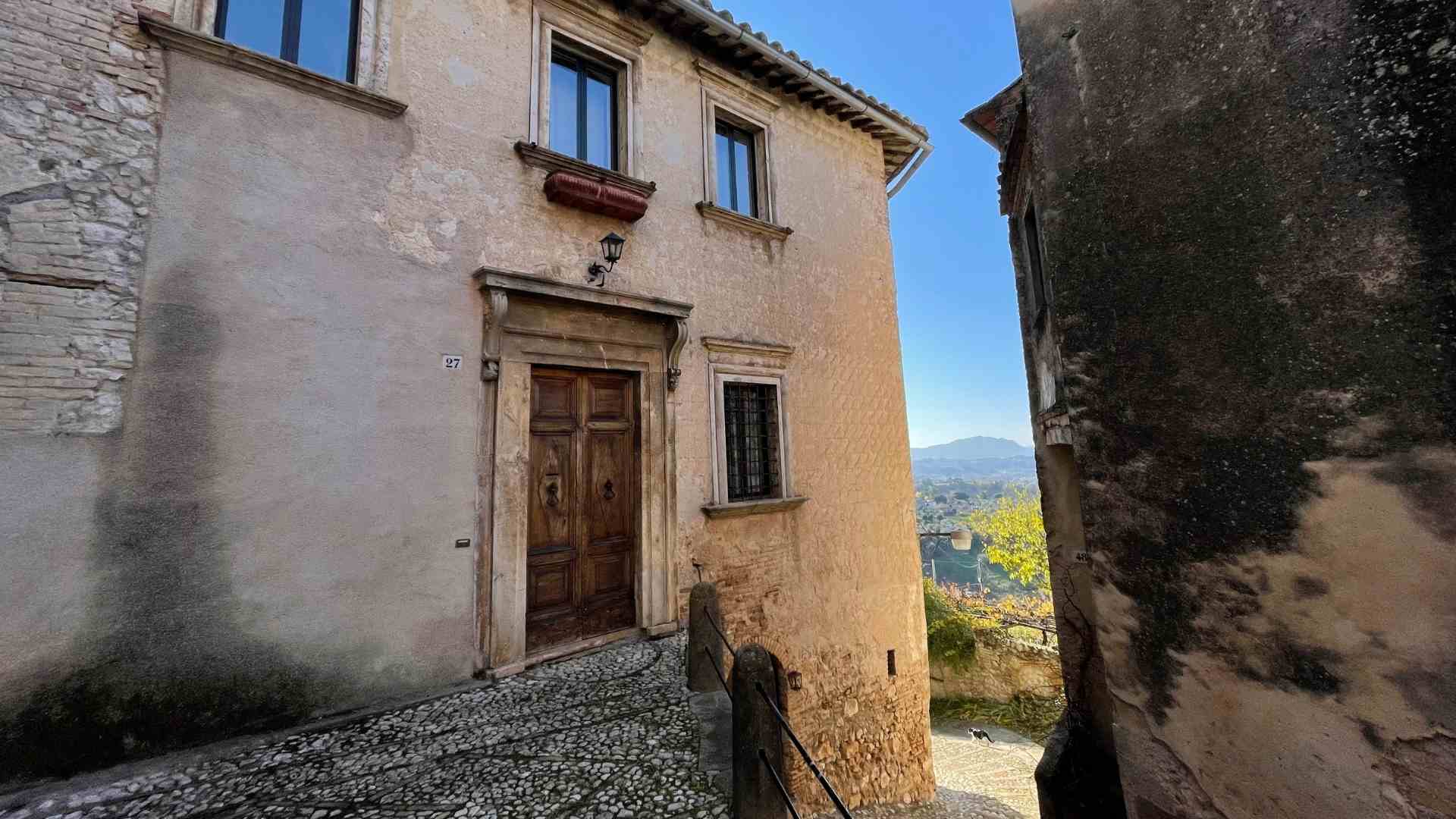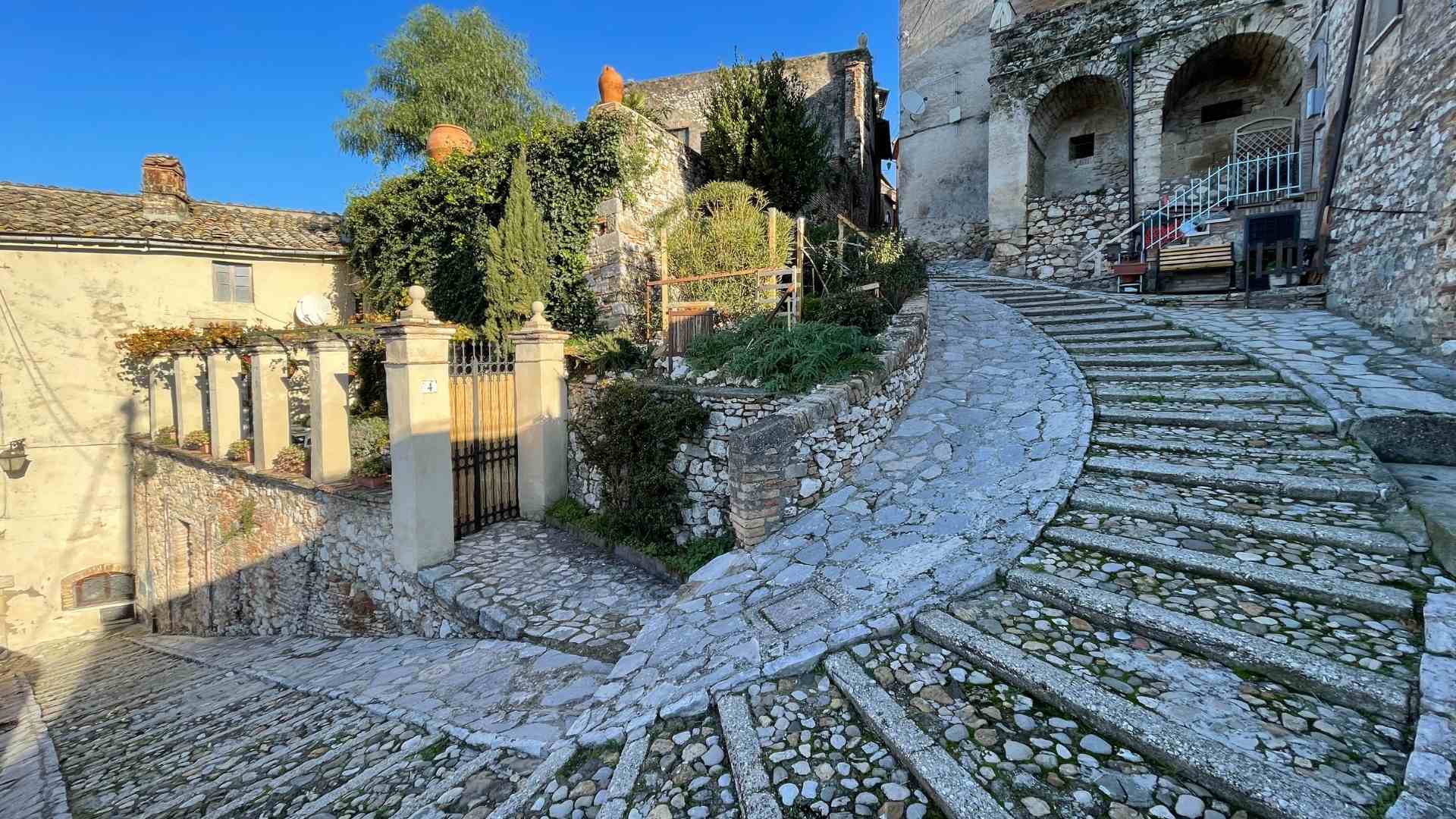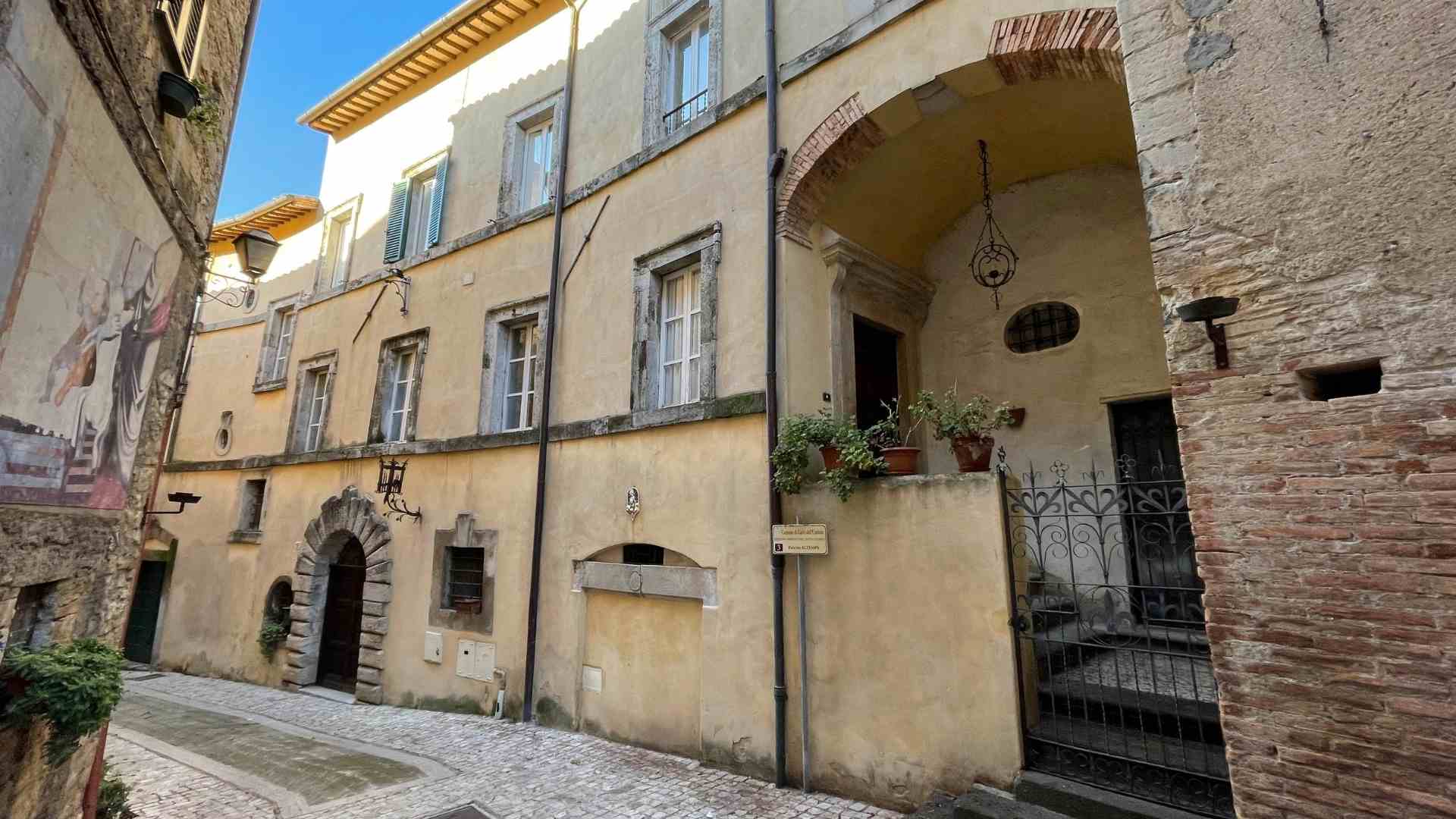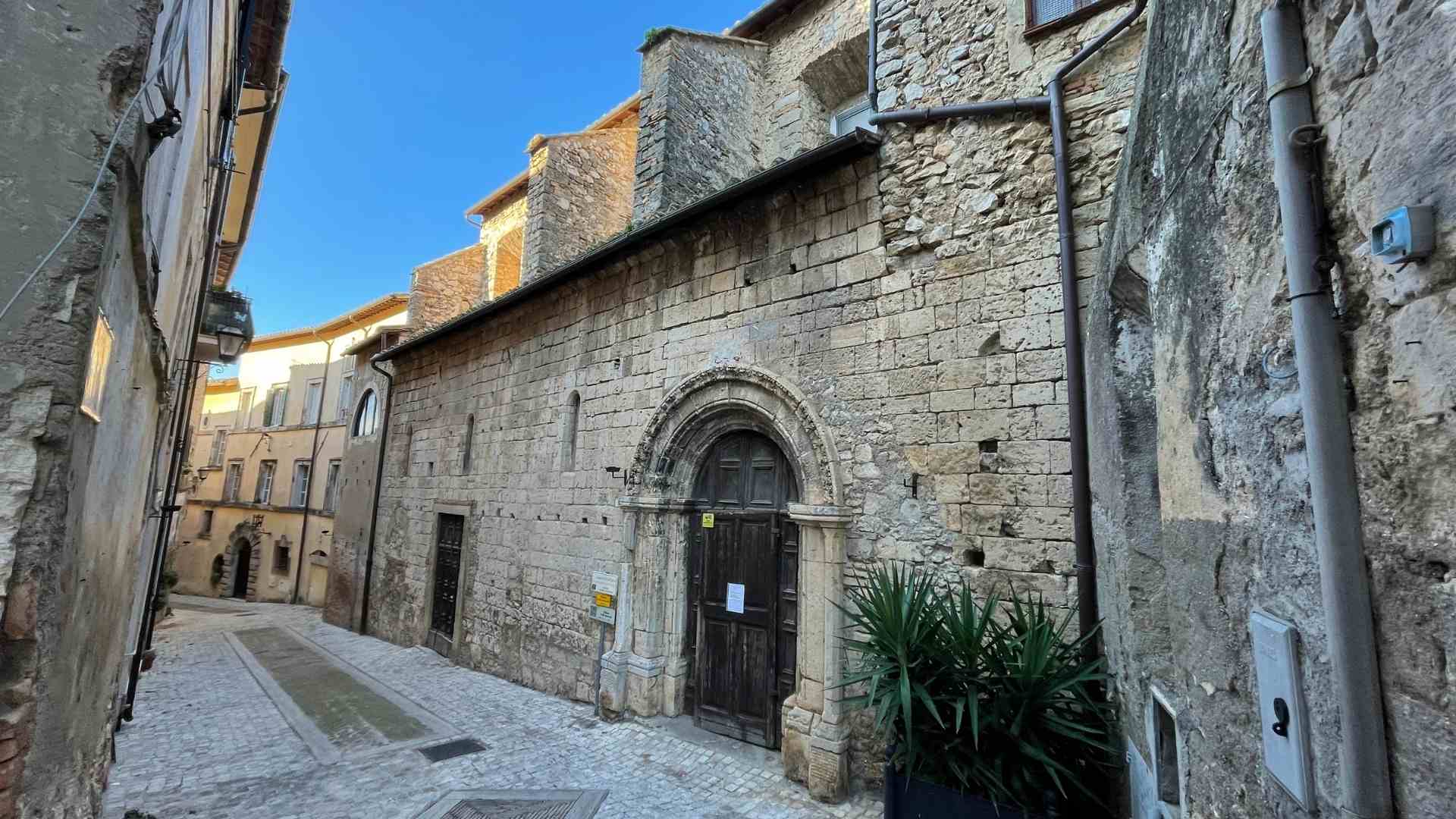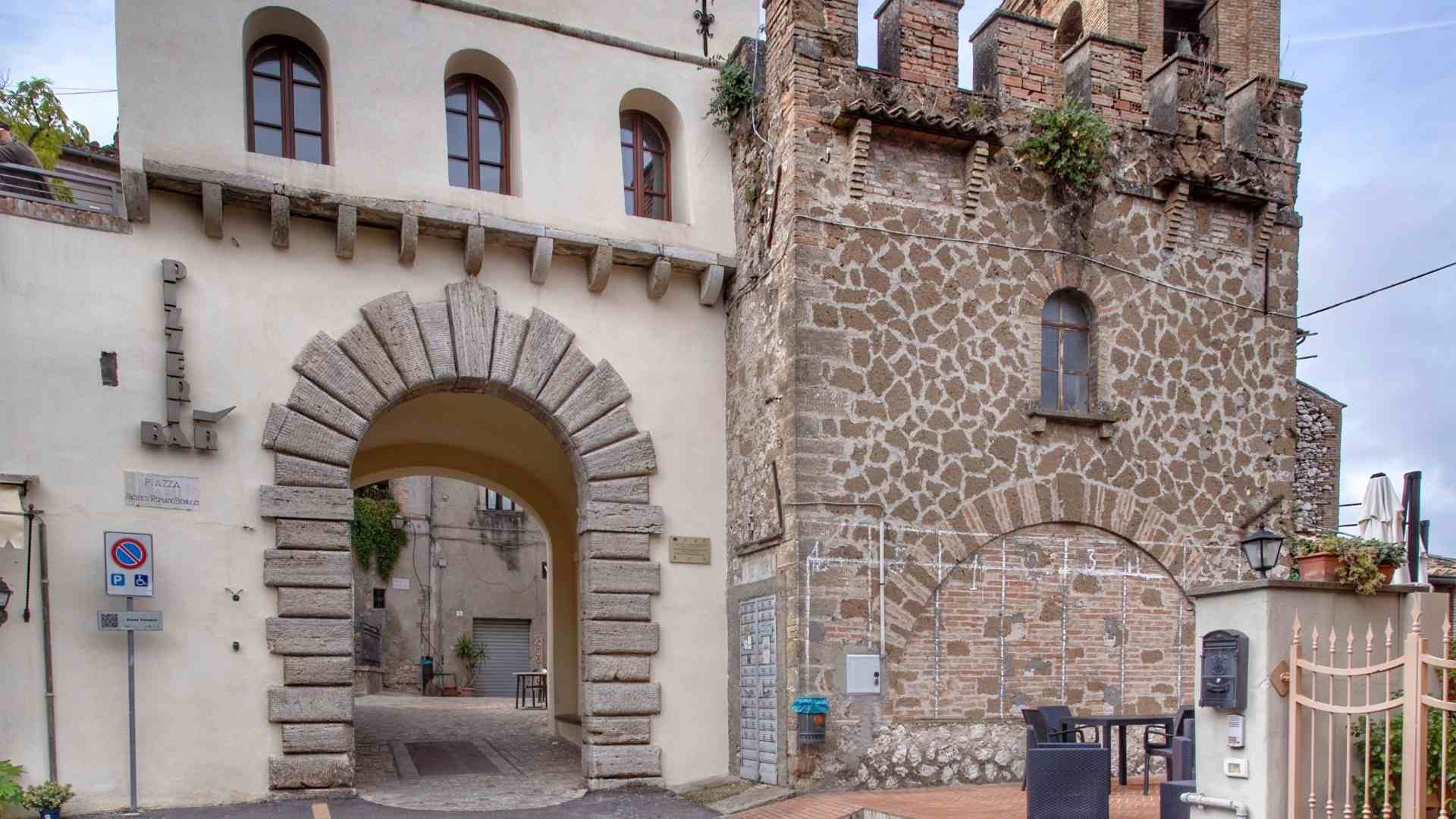Walking inside the old town discovering picturesque views and testimonies ranging from the Middle Ages to the Renaissance, discover the territory full of little villages which embrace beautiful little churches : it is worth losing itself inside the municipality of Calvi dell’Umbria.
Crossed by Porta da Capo you enter the old town of Clvi, which was included between the walls along Via Sabina (today Via Roma) and you meet the Church of Santa Maria Assunta of the XIII century.
Following the narrow street, after admired on the right the two floors of the Nicolini Palace of the XVI century, built by one of the administrator of the cardinal Altemps , you arrive in one of the most photographed places of Calvi: the Belvedere which faced on the roofs and on the Tevere valley.
Following a snake made of stairs and cobblestones you arrive in a crossroad which on the right takes us towards a lower part of the village bringing us to the suggestive and panoramic Piazzetta Sora Medea and following, the elegant Rosati Palace and the colorful Vicolo degli Orti.
For those who want to walk more, it is possible to arrive where in the past there was the Porta da Piedi and the Church of San Valentino , works now none more visible.
Per chi vuole allungare il cammino, è possibile giungere fino a dove un tempo si innalzava The suggest is to climb up the slope and, at the crossroad, take the narrow street to discover the Church of Santissima Trinità of the XVI century, discover the entrance of the Marchetti Palace of the XVII century and then, arrive to Piazza San Berardo and the house of the Franciscan protomartir.
The last part of the walk goes through Piazza Sant’Andrea, place where the homonymous parish was located, now disappeared, but where you can observe the facade of some medieval houses until to arrive to Ferrini Palace which hosts the town hall and, in the ground floor, the splendid Museum of the monastery of the Orsoline, and from which you can enter in the monastery, its kitchens and the garden.
Near the palace, Piazza Mazzini, in addition to the civic tower of the XVII century – or Chapel of San Pancrazio – offer the possibility to visit the Church of Santa Brigida, and the Oratory of Sant’Antonio with the valuable Monumental Crib of the XVI century.
Little villages, churches and places of interest of the territory
Different are the places of interest of the territory of the municipality, from San Pancrazio mountain, on which summit, reachable even by car , are preserves the remains of an ancient Tempio Italico to whom side there is the Church of San Pancrazio.
Just outside the village , along the SP 71 towards Otricoli, there is the Church of San Francesco and annex to it the Convent of S. Bernardo from Calvi – the third stage of the Way of the Franciscan Protomartyrs (Cammino dei Protomartiri Francescani) from Calvi dell’Umbria to Narni. Continuing, you see the Church of San Carlo, built between 1600 and 1623, and the Church of San Giovenale in Piloni location.
On the SP 18, towards Narni, before to arrive to Poggio di Otricoli, you see the Church of San Lorenzo whit the homonymous hamlet, characterized by a facade in stone ashlars ending with a bell tower to sail , from the XIII century and, following , the little village of Poggiolo and the Church of San Giorgio, built in1873 at the entrance of the village.
In the opposite direction of the SP 18, you see the Church of S. Maria Maddalena, a building of the XIV century restored at the end of the 1800 which, with the adjoining block, made the summer villa of the Seminary of Magliano Sabina , and nearby, taking the SP 54 the Church of S. Maria della Neve at the center of the homonymous hamlet.
